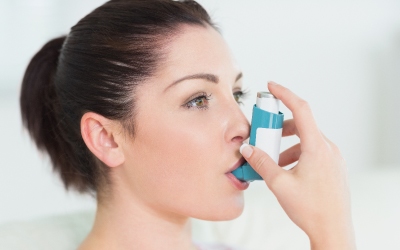What Do You Need to Do to Fight and Control Your Asthma?
When your wellness is affected by asthma, you find your wellbeing taking a hit time and time again. Unfortunately, asthma is just one of those health concerns that doesn’t quit – especially if you don’t know what triggers the condition or how to prevent this from happening. However, with a little research and preparation, you can avoid nasty asthma triggers and breathe easy. So, how do you do it?
The first thing you need to do to take control of your asthma is to get tested. Asthma is categorised by the fact that it makes your lungs swell and tighten in response to triggers, so it’s important to see an allergist to find out what those triggers are. In about 60% of asthma cases, allergic asthma is at play, meaning that it can be hard for you to breathe if you come into contact with underlying allergens. Skin-prick tests, and other methods of testing, can help you to figure out and avoid your triggers, be they cats, pollen, dust, or something else entirely.
If, during your test, you find that you’re allergic to tree pollens, grasses, and weeds, this unfortunately means that you’ll might start seeing symptoms as early as February, as this is when the trees begin to bloom. You might find yourself miserable through the summer if grasses are a trigger, while weeds can keep you wheezing through autumn. It’s important to know which one you’re allergic to, in order to combat symptoms. You can look online for a daily ranking of allergens, including seasonal tree pollens, grasses, weeds, and outdoor moulds. This gives you the chance to say indoors when levels of allergens are high.
However, it’s not always possible to stay indoors and weather the storm of allergens, so what do you do then? If the pollen levels are high, but you need to go outdoors, you might want to consider a N95 filter mask. They’re not so chic but they do keep pollen out of your nose and mouth. Neil Kao, MD, an allergist at the Allergic Disease and Asthma Centre in Greenville, South Carolina, notes, ‘Your nose is like a car windshield—pollen sticks to it.’ However, you can help to clear that windshield with a saline sinus rinse, which can be found in any pharmacy. If that doesn’t do the trick, there are always non-prescription herbal nasal sprays like NasalCrom (cromolyn sodium). These help prevent allergic reactions in your nose.
When you do go out, your hair can trap pollen throughout the day, so washing it when you get home can help to rinse it out, and ensure you get a good night’s sleep. This is especially useful advice for gel, mouse and hairspray users, as these products are really good at trapping pollen. Another good thing to do when you get home is to close your window (although you should really keep them closed the whole time you’re out!) An air conditioner can help you to further filter out pollen, especially on days in which the pollen count is high, and most ACs will have a filter-only mode so you don’t have to blast your home with cold air all winter.
Generally speaking, keeping calm can help prevent asthma flare-ups. A study recently found that sufferers of seasonal allergies (hay fever) have more extreme reactions the day after they perform stressful tasks. Clifford Bassett, MD, an allergist at New York University Medical Centre, explains, ‘Stress raises levels of the hormone cortisol,’ and that often leads to an amped-up allergic response. To combat stress, try stress-relieving techniques like meditation or a soak in the tub. Finally, over-the-counter antihistamine options work alongside your asthma medication to keep your symptoms under control. If those don’t work, ask your doctor about prescription antihistamines.


Comments are closed.